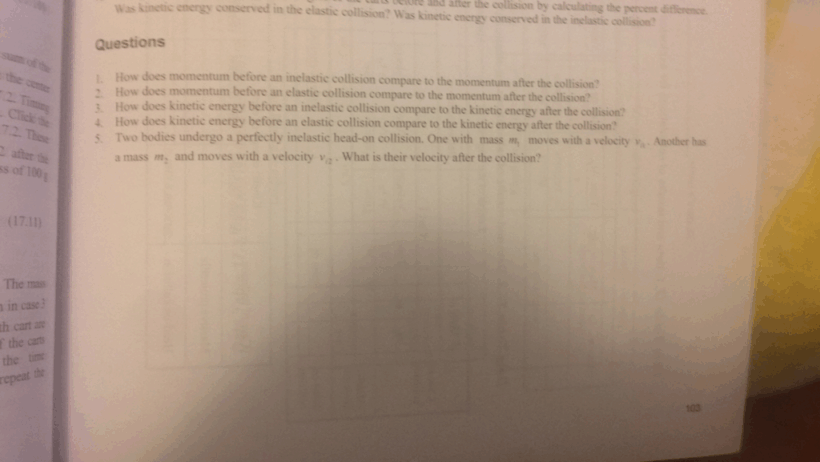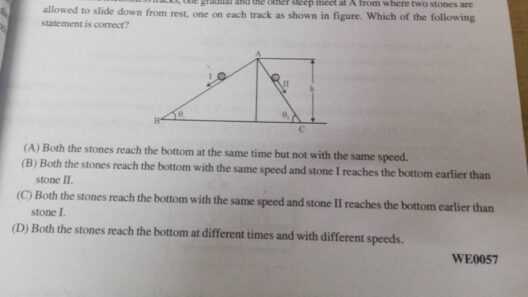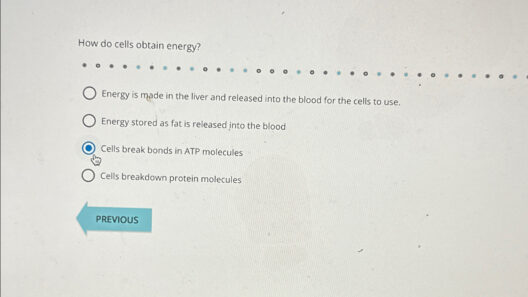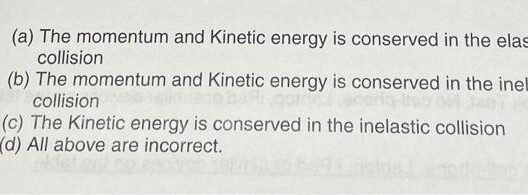Understanding the conservation of kinetic energy during head-on collisions is crucial in the field of physics, particularly in mechanics. To delve into this topic, it is essential to dissect the type of collisions encountered in physical interactions. Specifically, head-on collisions can be categorized into two primary types: elastic collisions and inelastic collisions.
In the realm of mechanics, an elastic collision is characterized by the conservation of both momentum and kinetic energy. This type of collision occurs where the objects involved rebound off one another without any deformation or generation of heat. A classic example of an elastic collision can be observed in the interaction of gas molecules, where kinetic energy and momentum are conserved due to negligible external forces and perfectly elastic properties of the interactions.
On the contrary, an inelastic collision diverges from this idealized model. Inelastic collisions occur when the colliding objects do not return to their original shapes post-collision, resulting in a loss of kinetic energy that transforms into other forms of energy, such as thermal energy or sound. A quintessential example is a car crash, where the vehicles crumple and generate heat and sound, indicating energy transformation rather than conservation.
To analyze the conservation of kinetic energy during these collisions, it is crucial to apply the laws of physics, particularly the laws of momentum. Momentum, defined as the product of mass and velocity, is conserved in all types of collisions. This law asserts that the total momentum of a closed system remains unchanged before and after the collision, regardless of whether the collision is elastic or inelastic. The equation governing momentum can be expressed as:
p_initial = p_final
Where p represents momentum. Therefore, for two colliding objects, the equation can be articulated as:
m_1*v_1_initial + m_2*v_2_initial = m_1*v_1_final + m_2*v_2_final
Here, (m) denotes mass, and (v) denotes velocity. This equation must hold true for both elastic and inelastic collisions, although it does not suffice in describing kinetic energy conservation in the latter.
In elastic collisions, the conservation of kinetic energy can be articulated with the equation:
KE_initial = KE_final
Where KE denotes kinetic energy, and it is mathematically defined as:
KE = 0.5 * m * v²
Consequently, for two objects colliding elastically, we derive:
0.5 * m_1 * v_1_initial² + 0.5 * m_2 * v_2_initial² = 0.5 * m_1 * v_1_final² + 0.5 * m_2 * v_2_final²
This equation indicates that the sum of their kinetic energies before the collision equals the sum after the collision. As such, elastic collisions exemplify scenarios in which kinetic energy is conserved in its entirety.
Conversely, during inelastic collisions, one witnesses a departure from kinetic energy conservation. The total kinetic energy before the collision will not equal the total kinetic energy after the collision due to the conversion into other energy forms. In these scenarios, the kinetic energy loss can be calculated by the difference between the initial and final kinetic energies:
KE_loss = KE_initial – KE_final
For instance, consider two vehicles colliding head-on at identical speeds. If they crumple upon contact, their combined kinetic energy diminishes, demonstrating that energy has transformed into different forms, not conserved within kinetic energy. This conversion process is not only vital for understanding physical interactions but also essential for safety designs within automotive manufacturing, where crumple zones are engineered to absorb energy during collisions, thereby protecting occupants.
Moreover, the significance of head-on collisions extends beyond theoretical physics. These collisions serve as critical considerations in fields such as engineering, safety design, and transportation. Understanding whether kinetic energy is conserved impacts how engineers design safety features and vehicles. In elastic collisions, adopting materials that minimize energy loss can lead to safer interactions. Conversely, in inelastic scenarios, understanding energy transformations is central to innovations that prioritize occupant safety.
Various real-world applications arise from this understanding. In sports, for instance, players must appreciate the physics of their interactions. Cricketers or soccer players, for example, utilize knowledge of momentum and energy conservation principles to maximize the effectiveness of their strikes.
The fundamental principles governing these collisions also extend to high-energy physics, where particles collide at near-light speeds in particle accelerators. The conservation laws observed in these scenarios elucidate the behavior of elementary particles, providing insight into the universe’s fundamental workings.
In conclusion, the conservation of kinetic energy in head-on collisions largely depends on the nature of the collision itself. Elastic collisions allow for the conservation of kinetic energy, while inelastic collisions demonstrate a loss of kinetic energy due to energy transformation. Through a robust understanding of these principles, one can apply the insights gained from analyzing head-on collisions across a diverse array of fields, from engineering to physics and sports. A thorough grasp of these concepts is essential in navigating the complexities of energy conservation and understanding its implications in practical applications.








